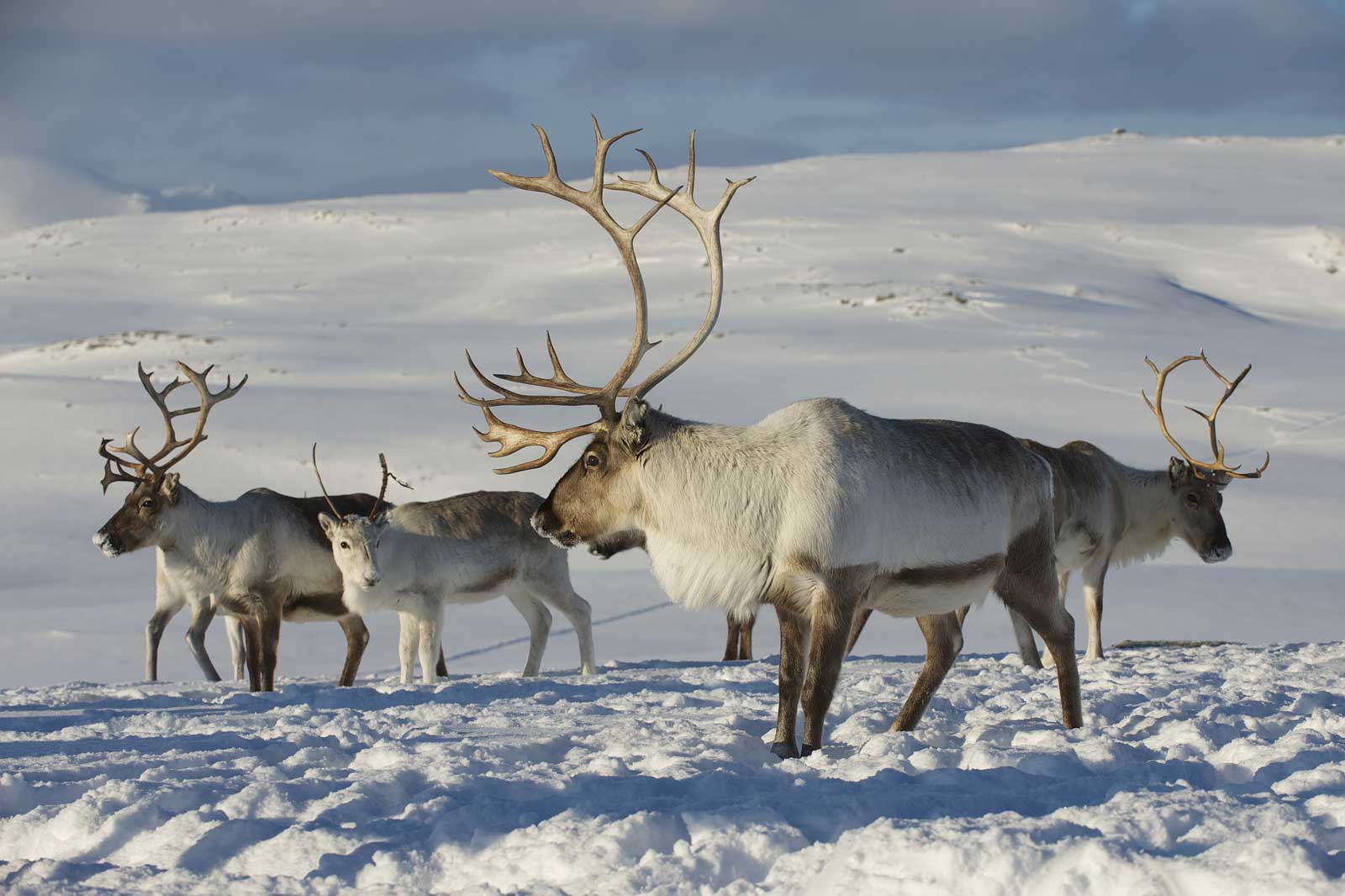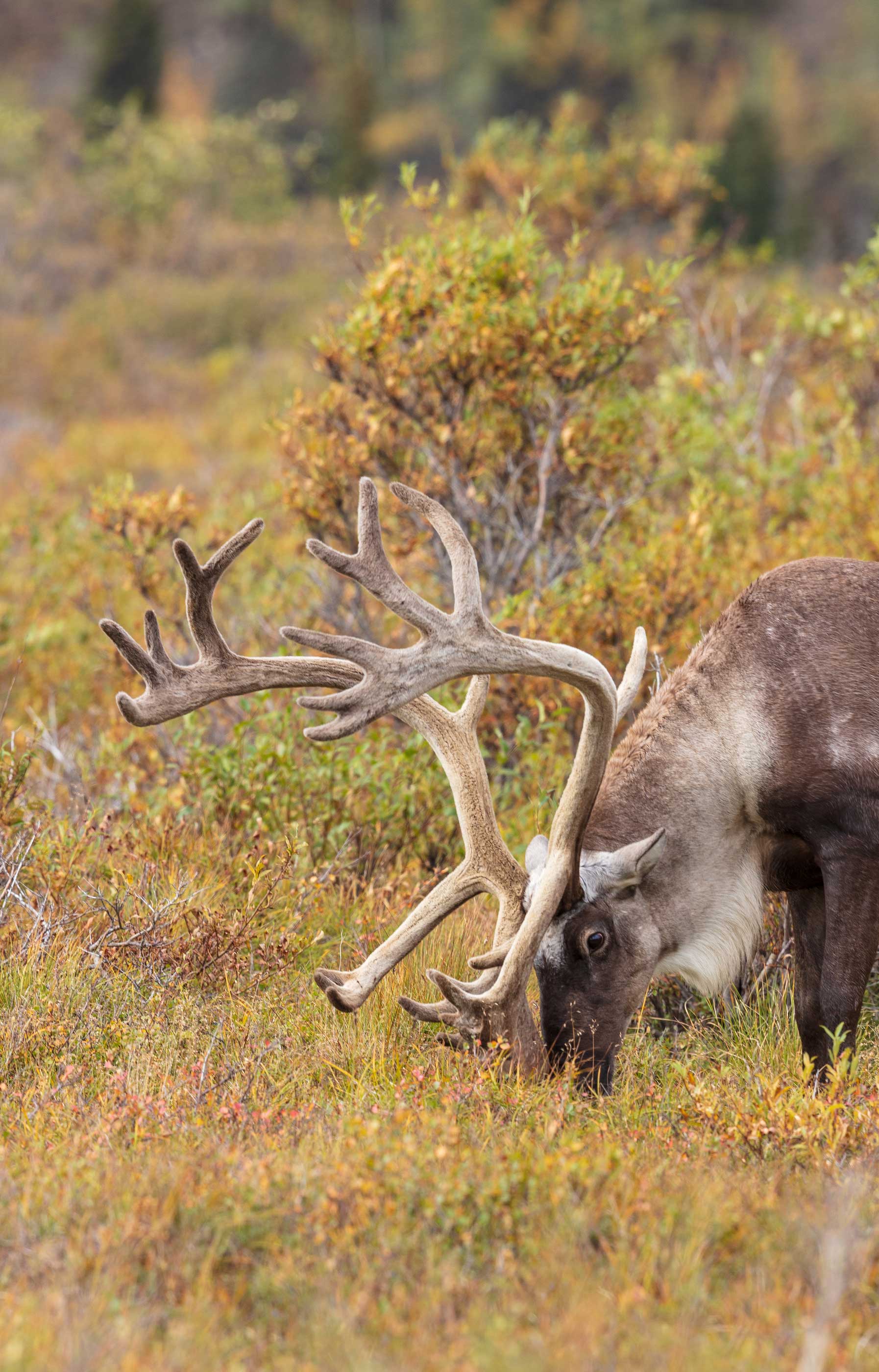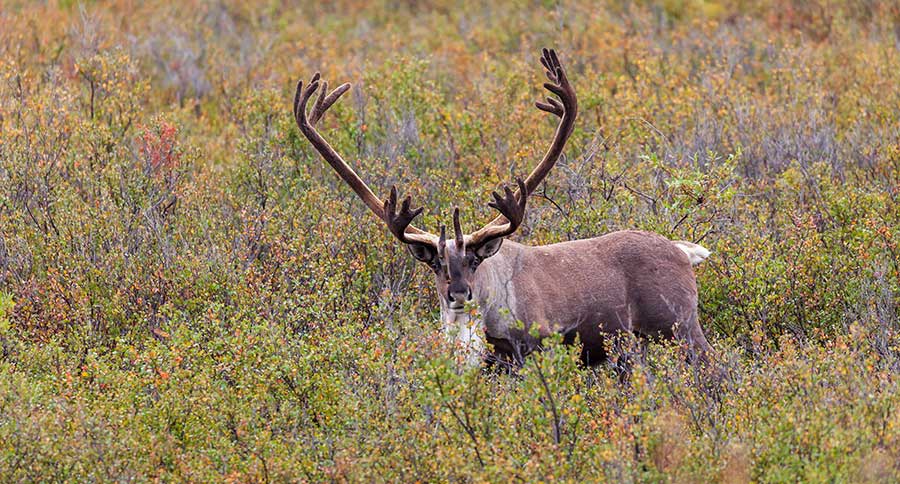Caribou have a unique adaptation to their arctic environments.
Also known as "reindeer," caribou are very well known for their branching, majestic antlers, tendency to herd up in huge migrating groups, and for being able to withstand harsh arctic climates in North America and around the world.
But did you know these animals also have a unique ability that allows them to see ultraviolet light?
It seems strange at first, but scientists have discovered the UV vision in reindeer eyes is more than just an awesome-sounding superpower. It's an adaptation that is key to these arctic mammals surviving in the toughest of climates.
What is UV light?

Most people probably think of detective shows like CSI or Law and Order when they think of UV light because it is used by investigators to find bodily fluids at a crime scene. It gets a bit complicated, but in short, UV light is simply a low band of the electromagnetic spectrum that is mostly beyond the visible spectrum of humans.
The lower limit of visible light for humans is around 400 nanometer or "nm," but UV light's visual range falls anywhere from 400 to 10nm.
Most ultraviolet light from the sun is filtered out by the earth's atmosphere. But some of the light that does get through is responsible for things like sunburn.
Ever heard of snow blindness? That is basically what happens when your eyes get sunburned. If you've ever seen footage of people on arctic expedition, you'll note they wear sunglasses or other eye protection. This is because the snow can reflect those rays into your eyes.
The snowblind effect is what happens when your eye recognizes and tries to shut down potential damage by causing the front of the eye to cloud absorb the damage before a lot of UV light reaches the sensitive retinas.
It can be quite damaging to human eyes, and it's why many native people living at extreme northern climates have often made their own form of snow goggles. Ironically enough, these goggles are sometimes made from parts of caribou.
Welding produces the same kind of harmful UV rays, which is why they wear such heavy masks to protect their vision from its damaging energy.
How do caribou see UV light?

The arctic reindeer's unique ability is still a relatively new discovery. Researchers with UCL first published a paper about it in the Journal of Experimental Biology back in 2011.
Remember the visible spectrum humans can see? On the low end, humans can see around 400nm, but the researchers found caribou can see at extremely low wavelengths between 350 and 320nm.
As weird as that is, it wasn't some kind of superhero ultraviolet vision that was just there by pure chance. Because caribou live in northern climes like Norway or Alaska, they're often exposed to long periods of darkness. In some of the more extreme northern reaches of their range, it may be dark almost 24 hours a day during the long winter months.
When the sun is visible, it often doesn't crack the horizon. As a result, these areas aren't getting the full light spectrum you'll see in most places on earth. Most of it is UV and it's being further reflected by the snow.
But the researchers were intrigued and wondered if the ability to see UV gave the animals an advantage. UCL Professor of Neuroscience Glen Jeffery explained the interesting discovery the scientists made about the animal's environment in the research paper.
"When we used cameras that could pick up UV, we noticed that there are some very important things that absorb UV light and therefore appear black, contrasting strongly with the snow," Jeffery said. This includes urine — a sign of predators or competitors; lichens — a major food source in winter; and fur, making predators such as wolves very easy to see despite being camouflaged to other animals that can't see UV."
Who would have thought? Suddenly, all those "UV-eliminating" washes sold for hunting clothing don't seem like as much of a gimmick as they once did.
That isn't the only amazing thing about caribou eyes
The same group responsible for the UV discovery also realized about five years ago that caribou eyes change colors depending on the season. In summer, they're a golden color and in the winter months, a bluish color. Again, this is in response to the changing light. During the summer, it's near continuous daylight in some parts of the caribou's range and the golden color helps with reflecting the extra light at that time of year.
In the winter, the darker eyes help retain what little light there is and reflect it back to the sensitive photoreceptors, helping the animal see better in the extreme low light conditions.
Another interesting thing about the UV discovery is that the scientists haven't, as of yet, figure out exactly how a caribou's eyes aren't damaged by UV light the way it would for most species on earth. We're betting they're working on that part of the puzzle next.
It all just goes to show we humans don't know nearly as much about the species who inhabit and share this earth with us as we'd like to think we know!
For more outdoor content from Travis Smola, be sure to follow him on Twitter and check out his Geocaching and Outdoors with Travis Youtube channels.
NEXT: WHAT BIG GAME SPECIES CAN YOU HUNT IN CANADA?
WATCH




